by Craig Brelsford
Founder, shanghaibirding.com
At Longheng, a village near Nonggang National Nature Reserve in Guangxi, Nonggang Babbler has gone from “new to science” to “automatic tick.” This is thanks to enterprising individuals such as Lú Róng (卢荣). Mr. Lu created a setup that he maintains daily. His Nonggang Babbler make nearly guaranteed appearances between the hours of 8 and 11. What an amazing turn of events for a species that was not discovered until 2008.
From 16–21 Dec., Michael Grunwell, my wife Elaine Du, and I were in Guangxi. In Longheng, we stayed at Mr. Lu’s home, which doubles as a lodge. We noted 76 species. Within walking distance of Longheng we had, besides Nonggang Babbler, White-winged Magpie, close nighttime views of Collared Scops Owl, the elusive Lesser Shortwing, and southern China favorites Sultan Tit, Buff-breasted Babbler, Streaked Wren-Babbler, and Black-breasted Thrush. Farther afield, driving in our rented Mitsubishi Pajero, we found Large Woodshrike in the heavily wooded valley near Longheng, White-browed Piculet and Chestnut-capped Babbler in the cane fields near Longheng, Slaty-bellied Tesia in a thicket along a farm road, Siberian Rubythroat along a stream near Nonggang village, and Red-headed Trogon, Long-tailed Broadbill, Grey-throated Babbler, and Pale-footed Bush Warbler near Nonggang National Nature Reserve. Pin-striped Tit-Babbler and Rufescent Prinia were seen at various points, and Crested Bunting were locally abundant on the road between Chongzuo and Longheng. All of the many Fork-tailed Sunbird that we saw were male. Conspicuous by their absence or near-absence were laughingthrushes (0 species noted) and raptors (3 species noted).
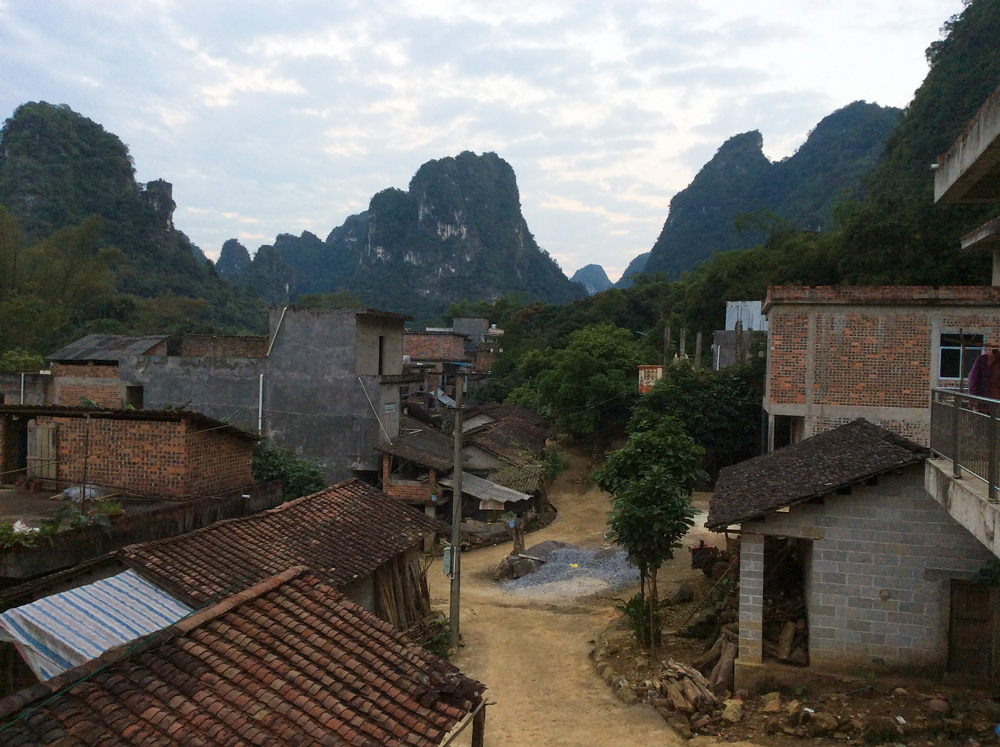
Longheng involves a flight to Nanning and a partly birdable three-hour drive south to the village. In the village, you can choose between easy activities such as photographing Nonggang Babbler at the setup and harder work such as owl-watching at night. The villagers are members of China’s largest minority group, the Zhuang. Even though sugar cane fills most flat areas, there is still much good habitat, and even the cane fields are somewhat birdable. In the surrounding forests you can get a good impression of tropical southeast China avifauna. The karst is a strange, romantic landscape. Thickly vegetated limestone towers rise like skyscrapers from the valley floor.
Reach Mr. Lu at any of the following numbers: +86 181-7815-7646, +86 (0) 771-8926541, and +86 181-7718-5027*. Accommodation at Mr. Lu’s lodge was spartan, but his wife’s country cooking was just fine. For 150 yuan per person per day, we were getting a room, breakfast and supper, and access to the blinds.
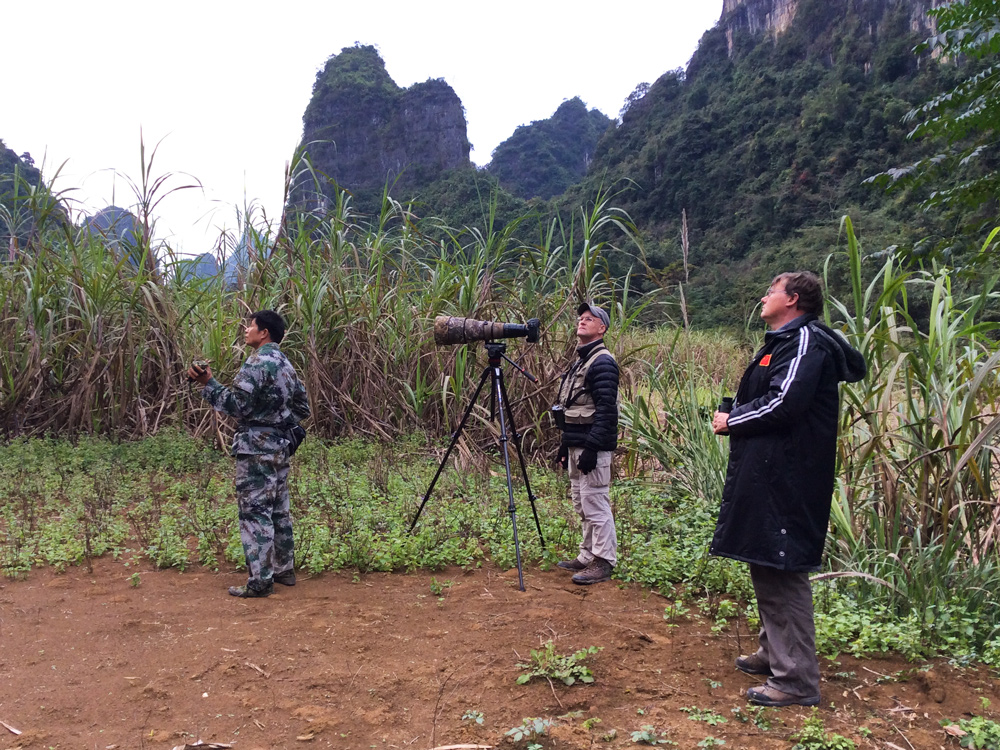
Mr. Lu is a good birder and will be happy to go birding with you if he has the time. Mr. Lu led us to the Chestnut-capped Babbler site, and he was with us when Elaine spotted the piculets in the sugar cane. He led the owl walk that got us views of Collared Scops Owl. Mr. Lu is in his 50s, was born in Longheng, knows every square inch of the territory within a 10 km radius, and is full of valuable info.
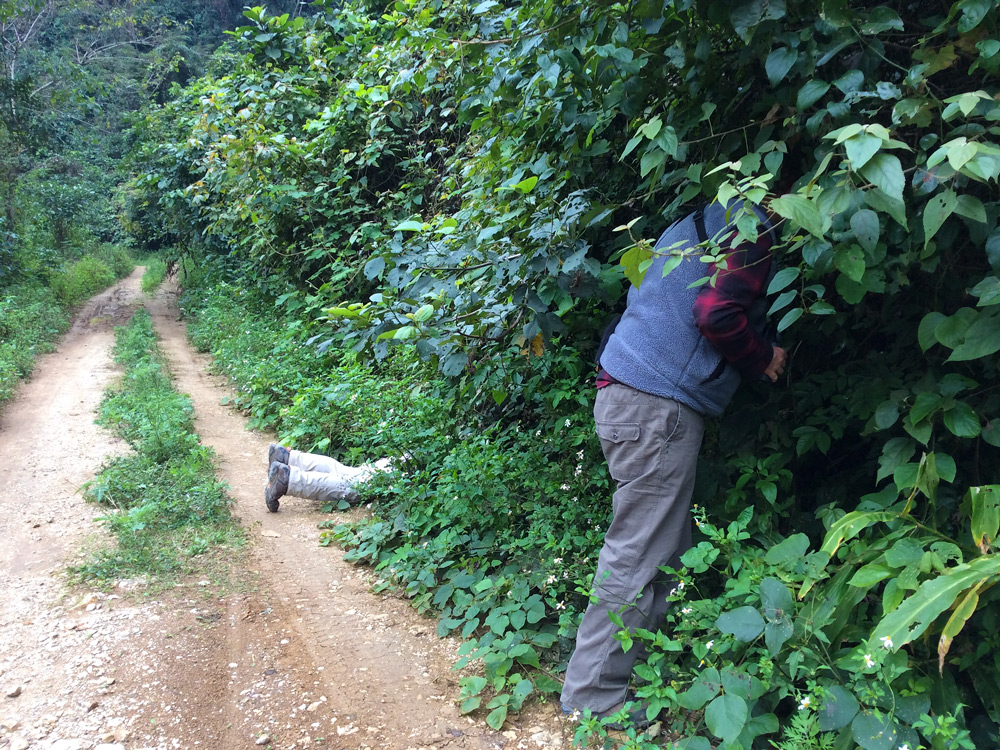
Mr. Lu has competition: the young Huáng Yuǎn Chéng (黄远程, +86 133-1781-2383). Mr. Huang controls some of the land around the giant banyan tree just outside the village. In the wooded area near the tree, Mr. Huang has created a beautiful setup using the natural limestone as props. Mr. Huang also has a blind for viewing White-winged Magpie.
It’s possible that Mr. Lu and Mr. Huang gained their wealth of bird knowledge by hunting birds. Now, these men not only don’t hunt, but I am sure they would also stop anyone they found poaching. In tiny Longheng, a bird-photography industry has arisen, centered around Nonggang Babbler. At other places in China, notably Baihualing in Yunnan, the same thing is happening. Chinese bird photographers are the driving force behind this small industry. The lust for photos of these mainly well-off men is having a trickle-down effect, putting cash in the pockets of formerly poor farmers and creating a free-market rationale for protecting birds.
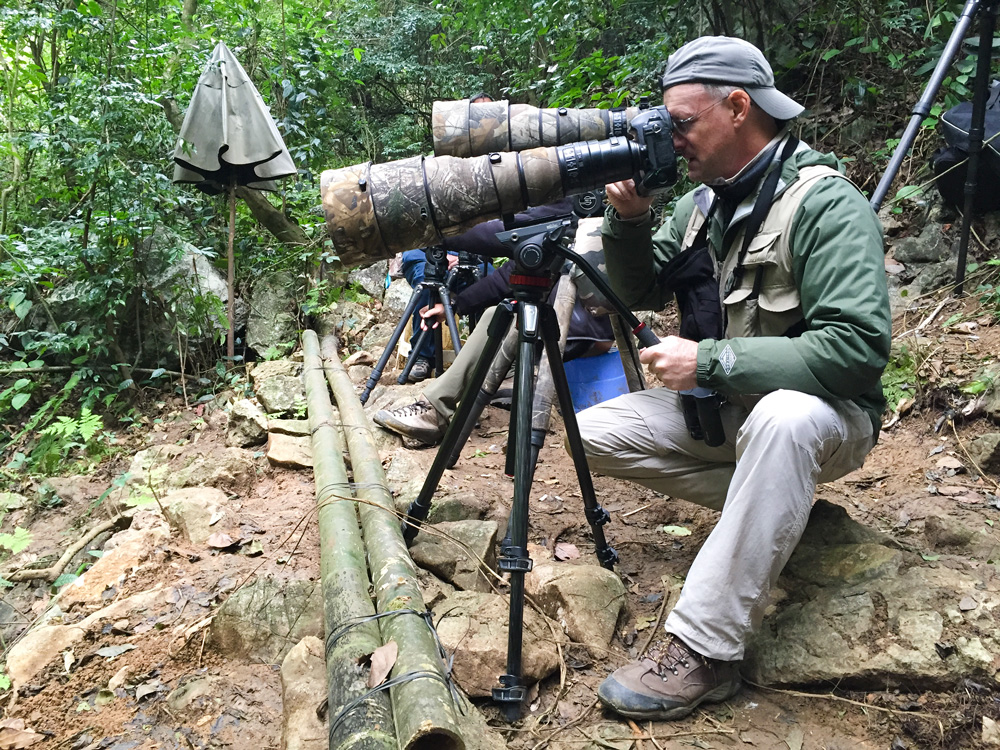
We did not look into getting permits for Nonggang National Nature Reserve. We had been warned that permits would be difficult to obtain, and I find demeaning the entire application process, in which extra scrutiny and double standards are applied to foreigners. We were happy with Longheng, and in any case the locked gate to the nature reserve lies several hundred meters deep within high-quality secondary forest, and one can bird to the gate without a permit.
Elaine Du was voted Most Valuable Birder of the trip. The election took place on the plane back to Shanghai. The democratic process evolved in this wise: Elaine cast her vote for me. Michael voted for Elaine. In a dramatic tie-breaking maneuver, I agreed with Michael and swung the election to Elaine. The engraving on Elaine’s citation reads: “For spotting and helping ID White-browed Piculet as well as for various & sundry excellent feats & good deeds, Elaine Du is voted Most Valuable Birder!”
THE TRIP
Wed. 16 Dec.
Nanning
Elaine Du, Michael Grunwell, and I flew from Shanghai’s Hongqiao Airport to Nanning. We picked up our rented Mitsubishi Pajero. Spent night at hotel near airport.
Thurs. 17 Dec.
Longheng
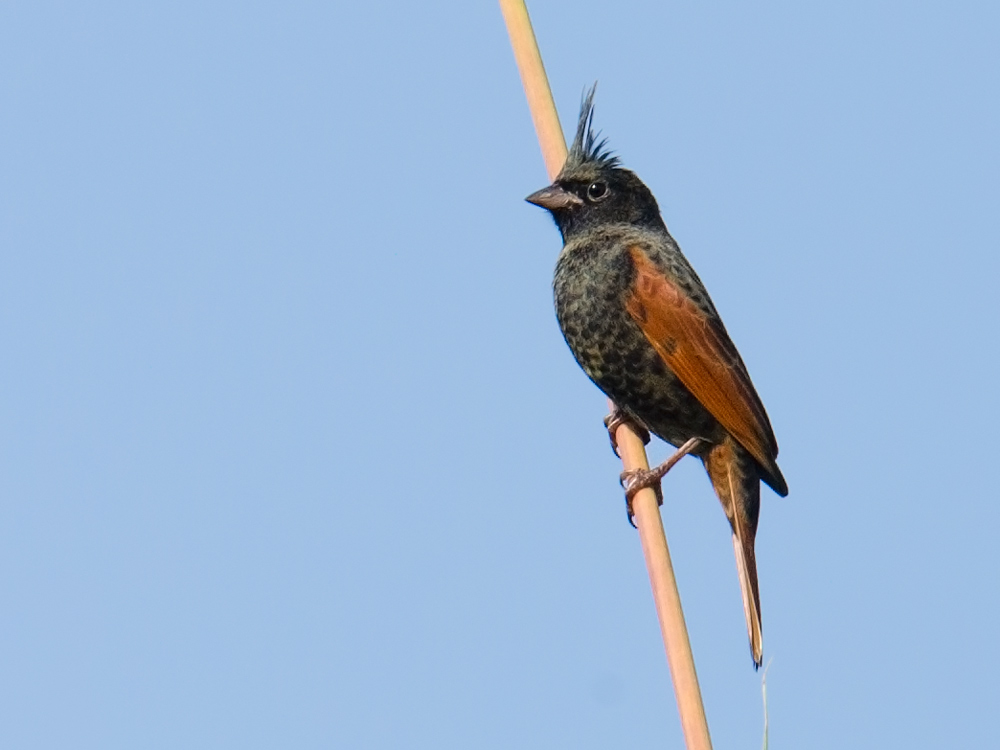
Bird of the day: White-winged Magpie
We left our hotel and drove 150 km southwest, taking the G7211 freeway to Chóngzuǒ (崇左). From there we took secondary roads through Xiǎngshuǐ (响水) to our destination, Lónghēng (陇亨). We found Crested Bunting between Chongzuo and Longheng. At a scrubby area near Xiangshui, we found Plain Flowerpecker and female Black-throated Sunbird.
At Longheng we met Mr. Lu, a local man who has set up blinds in the forests nearby. He took us to a blind. There, Michael had his first view ever of White-tailed Robin. Small Niltava and Snowy-browed Flycatcher also appeared. In the evening, Mr. Lu took us to an ancient banyan tree near the village. White-winged Magpie flew off as we arrived.
Fri. 18 Dec.
Longheng
Bird of the day: Nonggang Babbler
After breakfast we were taken to a setup by Mr. Lu. Other bird photographers were there. There arrived a flock of 10 Nonggang Babbler. The babblers are extremely tame, so much so that Mr. Lu has not even erected a blind. The photographers sit in the open. The Nonggang Babbler were totally without fear, at times foraging within inches of our feet. The mealworms set out by Mr. Lu are clearly a powerful attractant but are only a part of their diet. The setup also attracted Streaked Wren-Babbler, White-tailed Robin, a female Fujian Niltava, and Red-flanked Bluetail. After we were finished at the Nonggang Babbler setup, we visited another blind, where Michael picked up Black-crested Bulbul, and where I enjoyed another close view of Buff-breasted Babbler. We took a long drive on dirt roads. In one of the few places where forest reaches the road, we found Slaty-bellied Tesia. We drove back to Longheng and took a third road out of the village. This was the only road where the high clearance of our Pajero was necessary. This road led to a remote valley guarded by a skull and hound from hell. It took little imagination to see the rabid dog and scowling skull in the totally natural karst. We called this remote valley “the backcountry.”
Sat. 19 Dec.
Longheng
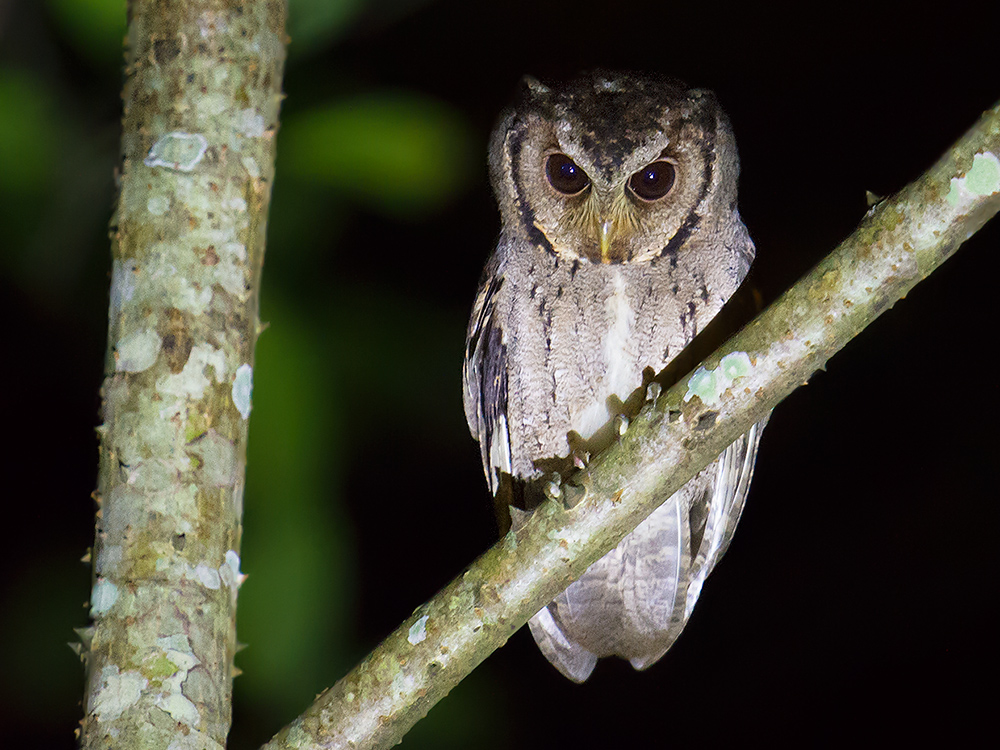
Bird of the day: Collared Scops Owl
In the morning we stumbled upon a blind near the giant banyan tree. This well-designed site is the work of the artful Mr. Huang, whom we later met. Here we found Japanese Thrush, Grey-backed Thrush, Black-breasted Thrush, and a stunning male Fujian Niltava. We drove slowly up the steep, overgrown road to the backcountry, where we picked up Large Woodshrike and Sultan Tit. We drove to the creek at Nonggang village, finding there a male Siberian Rubythroat. We drove as far as the locked gate at Nonggang National Nature Reserve. On the way to the gate we passed through very good primary or old secondary forest. We found 4 Red-headed Trogon and 12 Long-tailed Broadbill. We returned to Longheng. Mr. Lu wanted to look for Collared Scops Owl. Michael Grunwell and I followed Mr. Lu in the dark. We were accompanied by two Chinese bird photographers. Mr. Lu supplied the headlamps; I supplied the playback. We walked a few hundred meters down the dirt road. After a while we heard 2 Collared Scops Owl. We climbed through giant bamboo to the base of the cliff. We spotted the owl right above us on the bamboo. Five people were too many, and it soon left. We walked toward the other owl. The Chinese photographers half gave up and were walking back toward Mr. Lu’s house. Michael and I glimpsed a form flying through the treetops. It was the owl. We enjoyed a sustained view.
Sun. 20 Dec.
Longheng
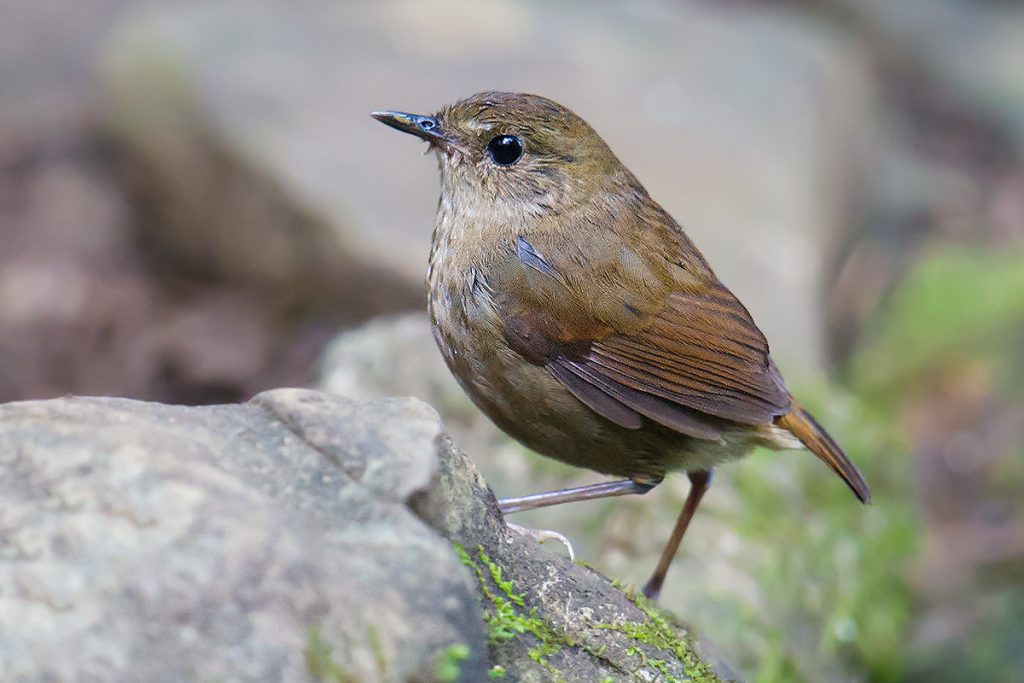
Bird of the day: Lesser Shortwing
We began our day at Mr. Huang’s blind near the giant banyan tree. Mr. Huang came by and took us to another blind, set up to allow photographers to view White-winged Magpie. The magpies arrived, as expected, but only for a few seconds. We drove to Nonggang, where we found Pale-footed Bush Warbler. We drove back to Longheng and revisited Mr. Huang’s Banyan Blind. We waited until after sunset. The light was so low that I could hardly focus my camera. Our patience paid off with Lesser Shortwing.
Through the gloom we could just make out the form of a small bird. So dark was it by now that I could ID the bird only by the photos I was taking of it.
The shortwing helped itself to a few mealworms and took a bath. It had no competition. Its strategy was to wait out the bigger birds and use its tolerance for very low light as an advantage. We got sustained views and photos of a rarely seen bird.
The shortwing was the capstone on another successful project in low-light bird photography. Ever since a magical morning in June 2010, when I photographed Fairy Pitta in the pre-dawn light at Dongzhai, Henan, I have been drawn to photographing forest birds in low light.
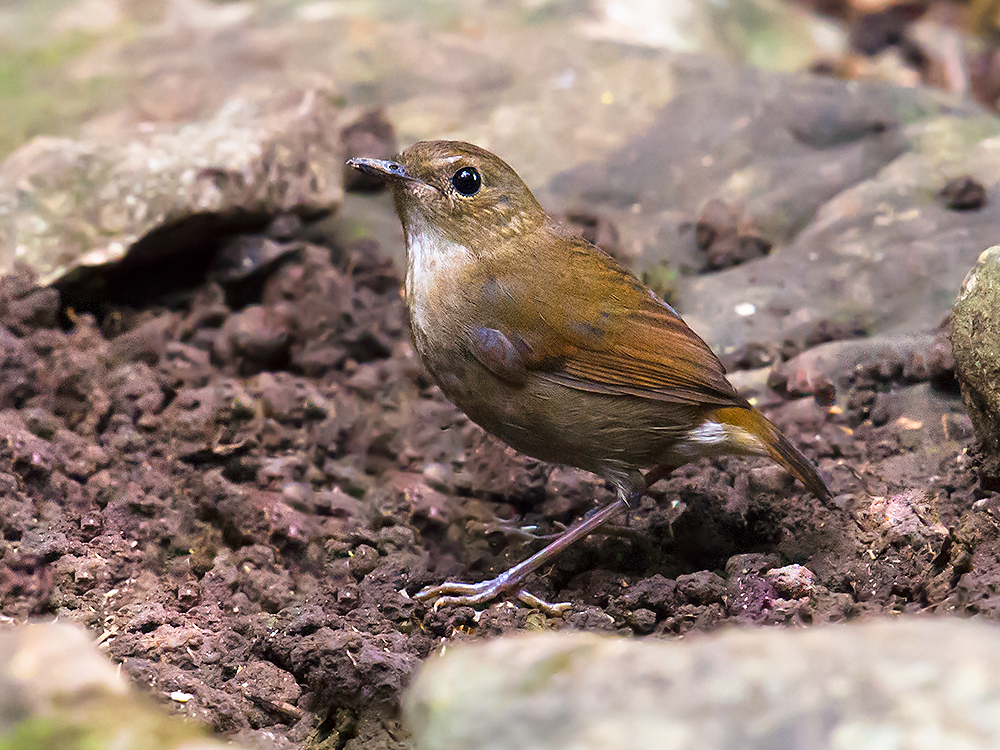
My current setup is well-suited to this task. I place my Nikon D3S and Nikon 600 mm F/4 lens atop my Manfrotto MVH502AH video head and Manfrotto MT055CXPRO3 carbon-fiber tripod. The D3S is now a 6-year-old model; though superseded by newer models such as the D4S, the D3S remains one of the best low-light cameras ever made, easily creating usable photos at ISO 10000.
I put the D3S in mirror-up mode. I tighten the head to the firmest position and slowly follow the movement of the shortwing with my left hand, which holds the wand attached to the head. When the shortwing stops, I release my hand from the wand; because the head is tight and hard to move, the camera always rests in the position to which I guide it.
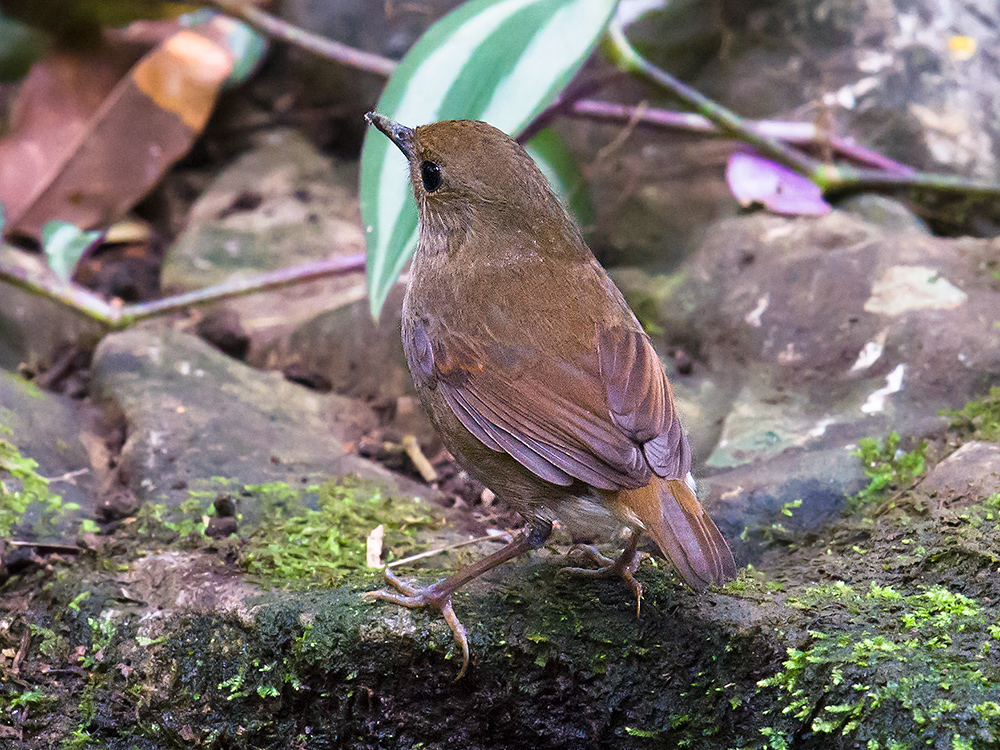
I press the button on my shutter-release cable, held in my right hand. The first press opens the mirror; I wait a second, then press the button again, opening the shutter and exposing the image.
Low light is not bad light. With patience, skill, and the right equipment, one can achieve lovely images of birds in near-darkness.
Mon. 21 Dec.
Longheng-Nanning-Shanghai
Bird of the day: White-browed Piculet
In the morning, Michael, Elaine, and I were led by Mr. Lu to a site (22.525578, 107.012304) 7 km from Longheng known to hold Chestnut-capped Babbler. We found 4 amid streamside vegetation and sugar cane. We next looked for Yellow-eyed Babbler at several sites at the edges of sugar-cane fields. We found none but got a fine consolation prize: 3 White-browed Piculet. The piculets were found in the sugar cane at 22.478903, 107.000033 and according to Mr. Lu breed in the heavily wooded village near that point. April is the best time to view the breeding piculets, he said. Our team had spread out and was alerted to the piculets by Elaine’s shouts. She didn’t recognize the piculets, but her vivid description led Mr. Lu to surmise that White-browed Piculet was a possibility. Playback attracted them back, and we all got good views. Michael was ecstatic; his last bird of the trip was a lifer.
We dropped Mr. Lu off at Longheng and enjoyed a smooth ride back to Nanning airport and an uneventful plane ride back to Shanghai.
PHOTO GALLERY
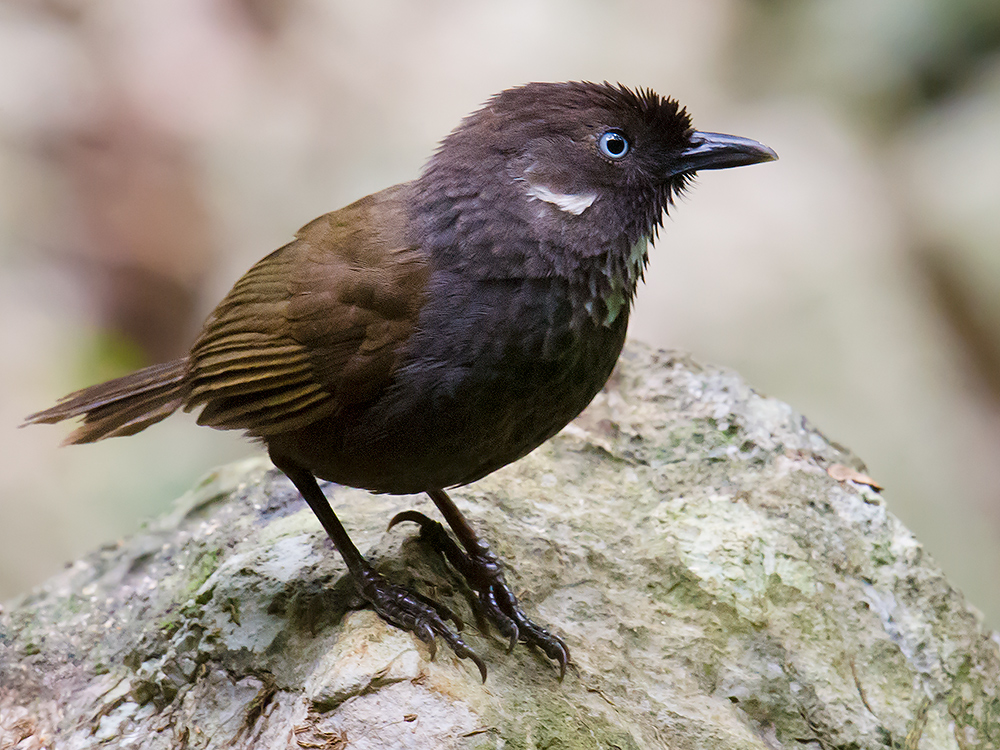
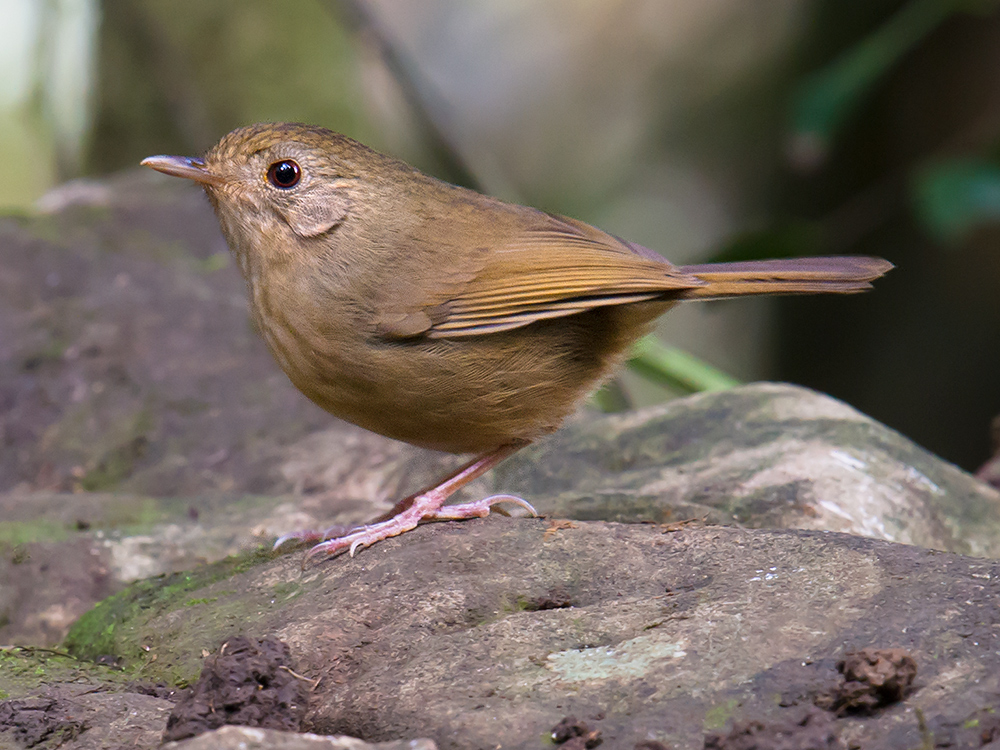
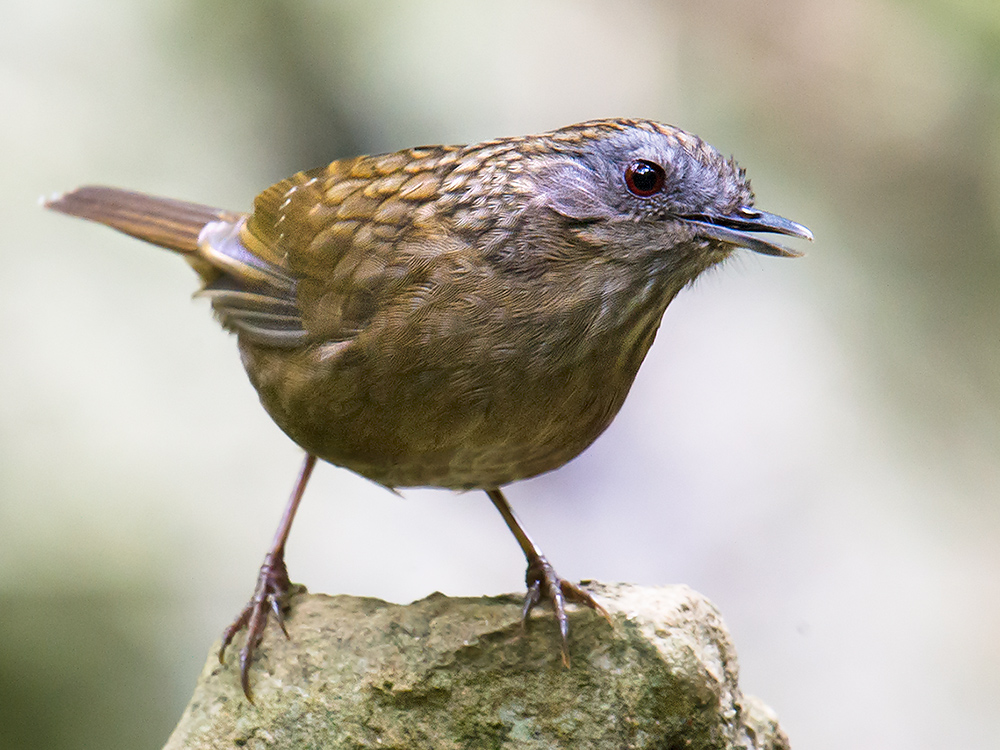
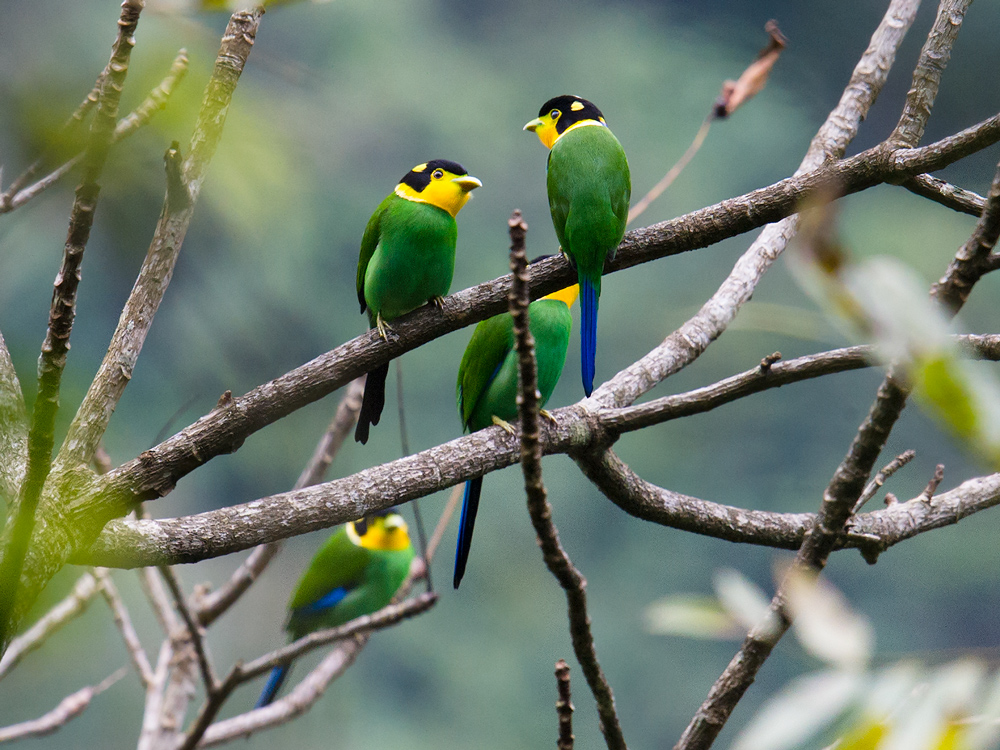
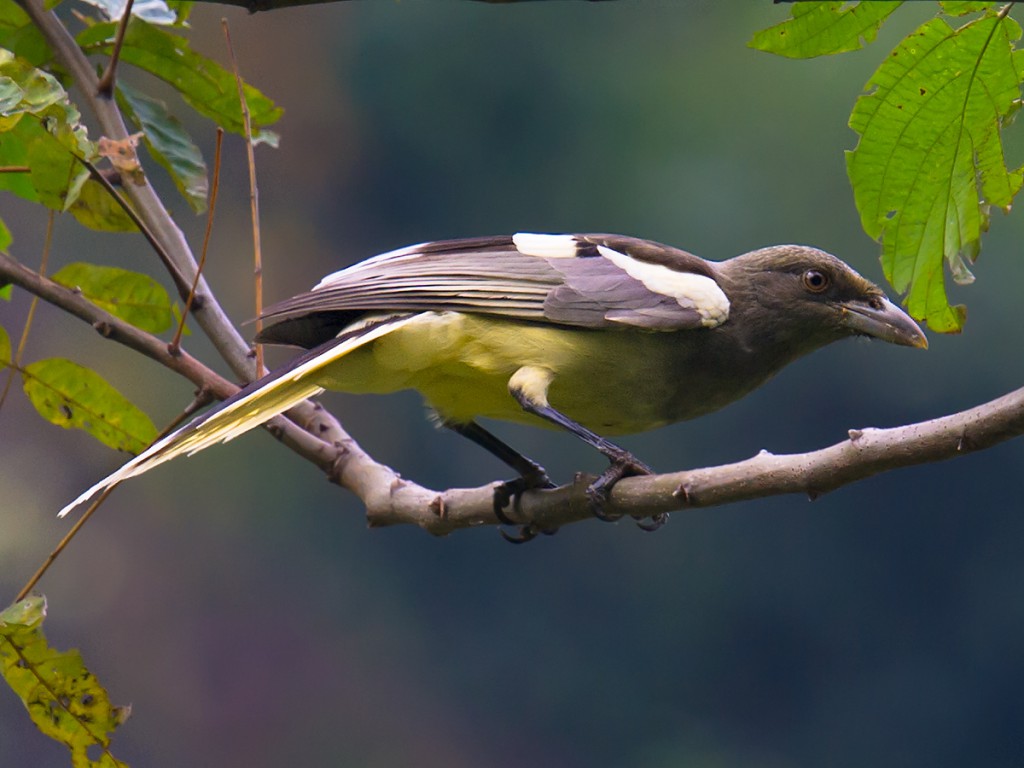
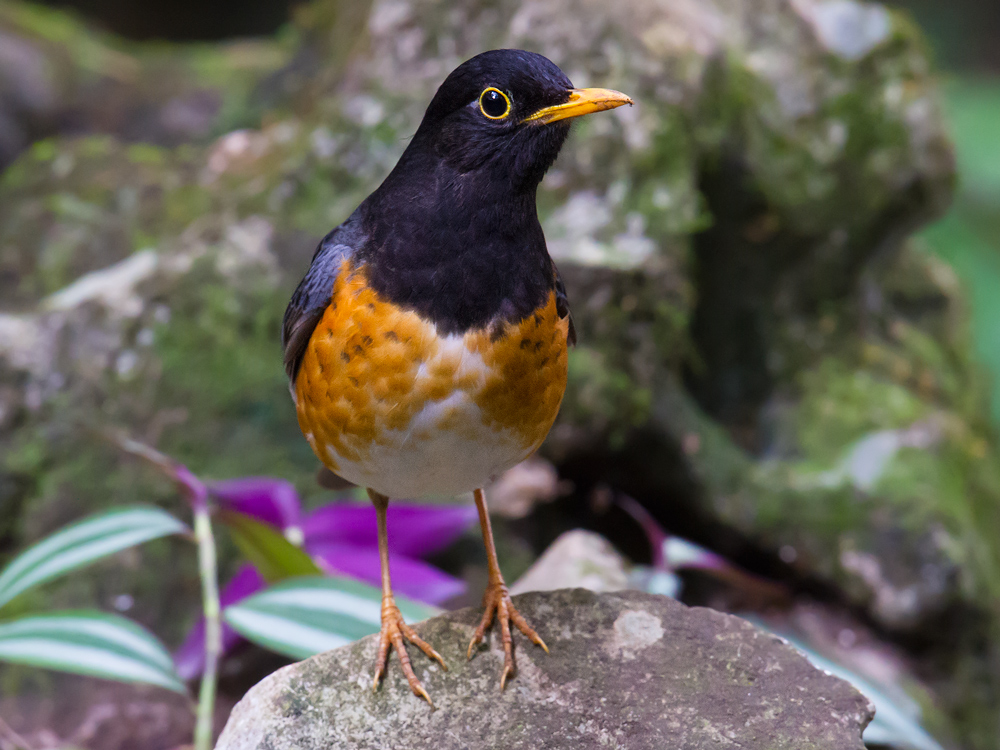
Species of Bird Noted Around Longheng and Nonggang National Nature Reserve, Guangxi, China, 16–21 Dec. (76 species)
Greater Coucal Centropus sinensis
Collared Scops Owl Otus lettia
Red-headed Trogon Harpactes erythrocephalus
Common Kingfisher Alcedo atthis
White-browed Piculet Sasia ochracea
Bay Woodpecker Blythipicus pyrrhotis
Common Kestrel Falco tinnunculus
Peregrine Falcon F. peregrinus
Long-tailed Broadbill Psarisomus dalhousiae
Large Woodshrike Tephrodornis virgatus
Long-tailed Shrike Lanius schach
White-bellied Erpornis Erpornis zantholeuca
Ashy Drongo Dicrurus leucophaeus
White-throated Fantail Rhipidura albicollis
Red-billed Blue Magpie Urocissa erythroryncha
White-winged Magpie U. whiteheadi xanthomelana
Large-billed Crow Corvus macrorhynchos
Grey-headed Canary-flycatcher Culicicapa ceylonensis
Sultan Tit Melanochlora sultanea
Japanese Tit Parus minor
Black-crested Bulbul Pycnonotus flaviventris
Red-whiskered Bulbul P. jocosus
Light-vented Bulbul P. sinensis
Sooty-headed Bulbul P. aurigaster
Puff-throated Bulbul Alophoixus pallidus
Black Bulbul Hypsipetes leucocephalus
Red-rumped Swallow Cecropis daurica
Yellow-bellied Warbler Abroscopus superciliaris
Brown-flanked Bush Warbler Horornis fortipes
Slaty-bellied Tesia Tesia olivea
Pale-footed Bush Warbler Urosphena pallidipes
Dusky Warbler Phylloscopus fuscatus
Pallas’s Leaf Warbler P. proregulus
Yellow-browed Warbler P. inornatus
Two-barred Warbler P. plumbeitarsus
Bianchi’s Warbler P. valentini
Rufescent Prinia Prinia rufescens
Plain Prinia P. inornata
Common Tailorbird Orthotomus sutorius
Streak-breasted Scimitar Babbler Pomatorhinus ruficollis
Nonggang Babbler Stachyris nonggangensis
Grey-throated Babbler S. nigriceps
Rufous-capped Babbler S. ruficeps
Pin-striped Tit-Babbler Macronus gularis
Chestnut-capped Babbler Timalia pileata
David’s Fulvetta Alcippe davidi
Streaked Wren-Babbler Napothera brevicaudata
Buff-breasted Babbler Pellorneum tickelli
Warbling/Swinhoe’s White-eye Zosterops japonicus/simplex
Crested Myna Acridotheres cristatellus
Grey-backed Thrush Turdus hortulorum
Black-breasted Thrush T. dissimilis
Japanese Thrush T. cardis
Chinese Blackbird T. mandarinus
Oriental Magpie-Robin Copsychus saularis
Fujian Niltava Niltava davidi
Small Niltava N. macgrigoriae
Lesser Shortwing Brachypteryx leucophris
Daurian Redstart Phoenicurus auroreus
White-tailed Robin Myiomela leucura
Siberian Rubythroat Calliope calliope
Red-flanked Bluetail Tarsiger cyanurus
Snowy-browed Flycatcher Ficedula hyperythra
Stejneger’s Stonechat Saxicola stejnegeri
Grey Bush Chat S. ferreus
Plain Flowerpecker Dicaeum minullum
Fork-tailed Sunbird Aethopyga christinae
Black-throated Sunbird A. saturata
Eurasian Tree Sparrow Passer montanus
White-rumped Munia Lonchura striata
Scaly-breasted Munia L. punctulata
Grey Wagtail Motacilla cinerea
White Wagtail M. alba
Olive-backed Pipit Anthus hodgsoni
Crested Bunting Emberiza lathami
Black-faced Bunting E. spodocephala
BIBLIOGRAPHY
Brazil, Mark. Birds of East Asia. Princeton University Press. Does not cover Guangxi province. Consulted in Shanghai.
MacKinnon, John & Karen Phillipps. A Field Guide to the Birds of China. Oxford University Press. We had a copy of MacKinnon at our lodge and consulted it at night.
Robson, Craig. Birds of Southeast Asia. Princeton University Press. Our first reference. “E Tonkin” (Vietnam) is the region closest to Nonggang.
EQUIPMENT
Cameras: Nikon D3S; for landscapes, Apple iPad, Apple iPhone 4S, and Apple iPhone 6
Lens: Nikon VR 600mm F/4G
Sound recorder: Olympus DM-650
Binoculars: Swarovski EL 8 x 32 (Craig), Zeiss Conquest HD 8 x 42 (Elaine)
Spotting scope: Swarovski ATX-95
ADDENDUM
* As of January 2021, the phone numbers for Mr. Lu were disconnected, and villagers were reporting that Mr. Lu had passed away.
Featured image: It may seem incredible that a vertebrate species in China remained unknown to science until the 21st century. That however is the case with Nonggang Babbler Stachyris nonggangensis, discovered by Chinese researchers in 2008. (Craig Brelsford)

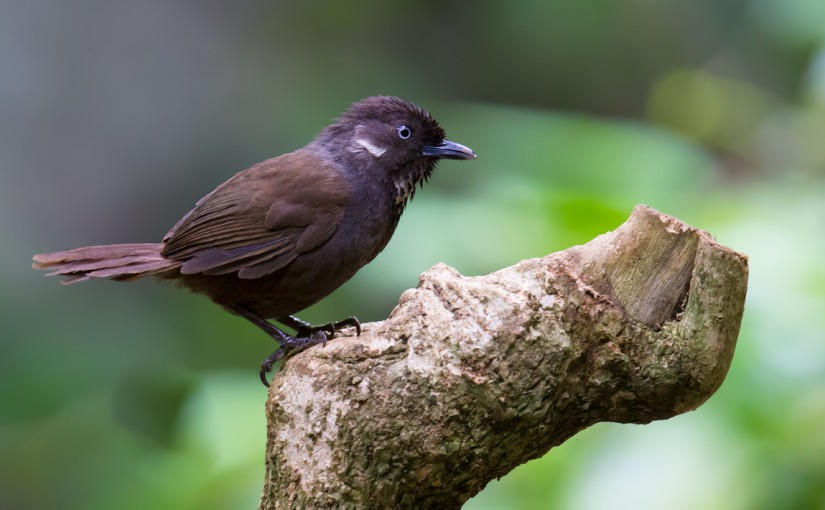
It is a real joy to read your reports. The last one Nonggang Babbler is a small masterpiece. You are born with the pen in your hand and open eyes and mind!
Hi, Enjoying your website today. Recently a very young black bird came to our balcony in Nanning. It is approximately 3 to 4 months old. We have fallen in love. What a smart bird. It bathes twice a day and has a dynamic personality. We don’t know if it is a starling or tri-colored blackbird. White tips at the end of it’s tail and hidden white color in the wings with a splash of white near the low part of the wing. You’re welcome to join us in Nanning.